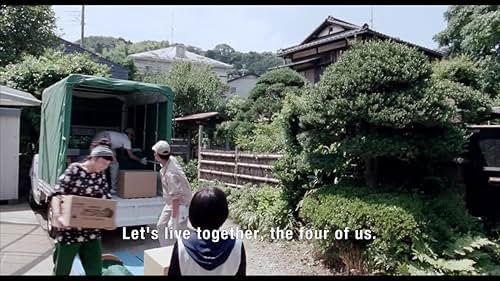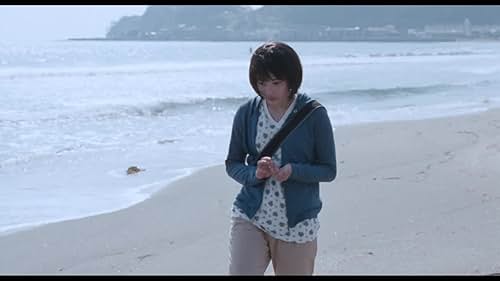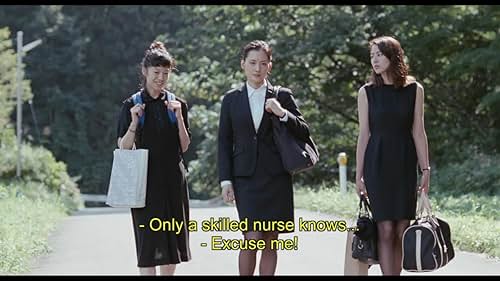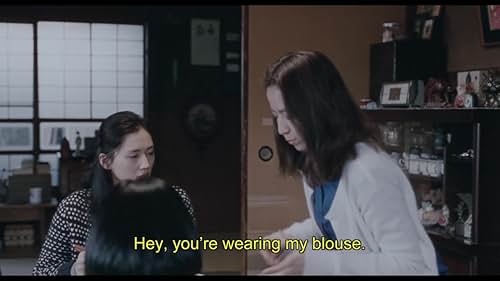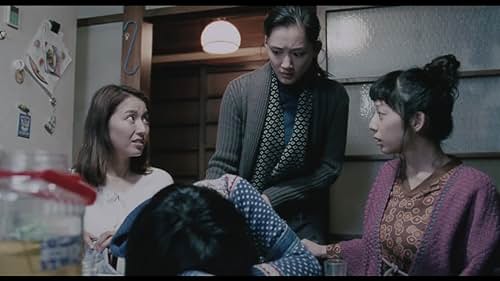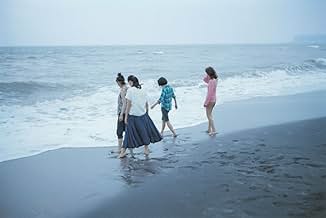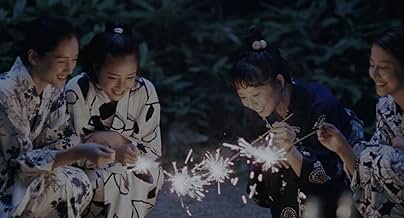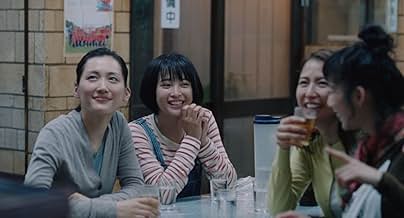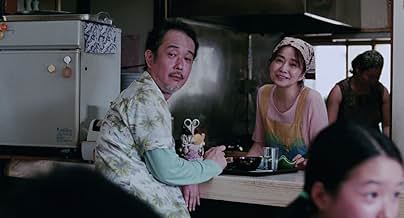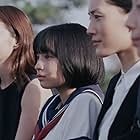VALUTAZIONE IMDb
7,5/10
17.428
LA TUA VALUTAZIONE
La storia di tre sorelle che vivono a casa della nonna quando arriva la sorellastra tredicenne.La storia di tre sorelle che vivono a casa della nonna quando arriva la sorellastra tredicenne.La storia di tre sorelle che vivono a casa della nonna quando arriva la sorellastra tredicenne.
- Premi
- 16 vittorie e 24 candidature
Ryohei Suzuki
- Dr. Yasuyuki Inoue
- (as Ryôhei Suzuki)
Ôshirô Maeda
- Fûta Ozaki
- (as Ohshiroh Maeda)
Trama
Lo sapevi?
- QuizBefore they shot the movie, four actresses spent a day at the house together to get familiarized with the layout of the house and get comfortable with each other. They cleaned the house, weeded the garden, cooked meals and ate together. They also fixed the shoji screen, which Koreeda liked it so much that he incorporated the scene in the movie.
- BlooperWhen the four sisters are having their lunch with Chika's boyfriend at their house, in the interior shot looking outward, all the noodles on the main plate have been eaten.
In the next scene, an exterior scene looking inward to the house, Sachi reaches down and takes the plate away but Chika reaches up and takes several noodles off the plate with her chopsticks.
- Citazioni
Sachi Kôda: I want you to stay forever.
Suzu Asano: I want to stay forever.
- ConnessioniReferenced in Il était une fois...: Une affaire de famille (2021)
Recensione in evidenza
This movie has all the elements to be a perfect Japanese movie usable for a Wstern audience. We have a story about tree sisters living alone in a traditional house facing everyday problems like many Ghibli productions, trains in the mountains, funerals as in the "Departures", little restaurant and cherry blossoms. However here we have an opposite narration compared to the movies of Ozu that made us fall in love with that absolutely Japanese simplicity as well unexpressed depth of emotions inside them. In other words, the beginning of those black and white masterpieces was one of familiar tranquility. A tranquility then threatened and finally restored. Let's think to "Tokyo Monogatari" in which at the end the old mother went back to the village where the younger daughter waits for her. Or the old father giving her daughter as spouse to another house at the end of "Sanma no aji". So there the key was finding the harmony. Like the regular sound of wood made by a bamboo fountain in a Japanese garden. Here in "Our little sister" we start from a situation of familiar disorder and in the end nothing changes so much. The hardships of the three sisters remain the same. Sachi, the older one, still leads all the house and the garden by herself. Yoshino, the lovable middle one, still looks for a new boyfriend whit out stopping the habit of drinking alone. Chika, the little one, still date with his naif boyfriend. But in the middle of all this something happened. They accepted in their lives the young sister Suzu, born after their father divorced. This young girl brought to their life a moment of happiness as well hope to going on to what they were doing. Suzu didn't change their life. Is not what can be called "a familiar earthquake". She should be compared nothing more to a blow of spring wind refreshing the house of the three sisters. This is another great difference from past production. We don't have strongly deep feelings. The sisters lives the joy of everyday. Somebody criticize Koreeda for this aspect accusing him of making a movie of good atmosphere and not of emotions. However family has changed. Japan has changed. The three sisters here stands for the contemporary Japan with low birth rate and feared by the earthquake of 2011. A Japan concerned more to what is going on today then to what can happen tomorrow. So we find ourself on the other side to the society growing fast, sometimes too much, in the Ozu's productions where smoking chimneys made their comparison a lot of times. The end show us this idea more clear. The four girls looks over the sea on a shore while speaking about their future without having great expectations. We find no more girls waiting for their boyfriends while practicing on surf as in Kitano's "A scene at the sea". A masterpiece filmed in the highest economic welfare of Japan of the late 80es. In Koreeda's movie we find contemporary girls simply hoping their everyday life can be as always was until then. With hardships but also joy. Without concerning too much about past,that is to say family and father, and future,or marriage and work. Paradoxically a contemporary return to the simplicity of "mono no aware". The medieval Japanese aesthetic principle of enjoy what is short-lived. As the cherry blossoms. As the windy teenage pureness of Sachi. The little sister that brings happiness.
- pggirasole
- 17 gen 2016
- Permalink
I più visti
Accedi per valutare e creare un elenco di titoli salvati per ottenere consigli personalizzati
- How long is Our Little Sister?Powered by Alexa
Dettagli
- Data di uscita
- Paesi di origine
- Siti ufficiali
- Lingua
- Celebre anche come
- Our Little Sister
- Luoghi delle riprese
- Kamakura, Kanagawa, Giappone(town where the three sisters live)
- Aziende produttrici
- Vedi altri crediti dell’azienda su IMDbPro
Botteghino
- Lordo Stati Uniti e Canada
- 467.555 USD
- Fine settimana di apertura Stati Uniti e Canada
- 25.118 USD
- 10 lug 2016
- Lordo in tutto il mondo
- 15.946.109 USD
- Tempo di esecuzione2 ore 7 minuti
- Colore
- Mix di suoni
- Proporzioni
- 1.85 : 1
Contribuisci a questa pagina
Suggerisci una modifica o aggiungi i contenuti mancanti

Divario superiore
By what name was Little Sister (2015) officially released in India in Hindi?
Rispondi
